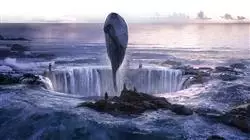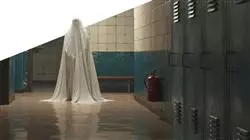University certificate
The world's largest faculty of video games”
Introduction to the Program
Improve your knowledge and artistic skills with the best software of VR Video Game Graphic Design, thanks to our program”

This Postgraduate diploma in Baking, UVS, and Sci-Environments in Art for Virtual Reality offers the possibility to the VR Video Game professionals to perfect their skills in the design and creation of titles in this industry. For this purpose, this program offers students a specialized teaching staff with extensive experience in the field of Virtual Reality Video Games.
This Postgraduate diploma will provide the necessary knowledge in the different software used by the reference studios to perform quality UVs or Baking that results in a 3D object with low polygonal load. At the same time, it will demonstrate the correct development of a Graphic Design project in this sector from start to end.
The professionals in this field will be able, upon completion of this program, to acquire the necessary skills to work with complex specifications and software, giving a qualitative leap to their creations of 3D modeling for Video Games.
An opportunity to specialize with a Relearning methodology that will facilitate learning with multimedia resources, video summaries, complementary readings and simulations of real cases. All this, in a 100% online mode so that students can access the content whenever and wherever they wish, adapting the study to their own time.
Specialize in the competitive career of graphic design in Virtual Reality video games with this Postgraduate diploma”
This Postgraduate diploma in Baking, UVS, and Sci-Environments in Art for Virtual Reality contains the most complete and updated educational program on the market. Its most outstanding features are:
- The development of practical cases presented by experts in video game creation and design through Virtual Reality technology
- The graphic, schematic, and practical contents with which they are created, provide practical information on the disciplines that are essential for professional practice
- Practical exercises where the self-assessment process can be carried out to improve learning
- Its special emphasis on innovative methodologies
- Theoretical lessons, questions to the expert, debate forums on controversial topics, and individual reflection assignments
- Content that is accessible from any fixed or portable device with an Internet connection
Advance your career by perfecting your skills and mastering creative VR game design software”
The program’s teaching staff includes professionals from sector who contribute their work experience to this program, as well as renowned specialists from leading societies and prestigious universities.
Its multimedia content, developed with the latest educational technology, will allow professionals to learn in professionals a situated and contextual learning, i.e., a simulated environment that will provide immersive education programmed to learn in real situations.
The design of this program focuses on Problem-Based Learning, by means of which professionals must try to solve the different professional practice situations that arise during the academic year. For this purpose, students will be assisted by an innovative interactive video system developed by renowned experts.
Access the knowledge that will expand your possibilities in the artistic industry of Virtual Reality Video Games"

Activate your career in the most powerful VR art studios in Video Games, guided by a teaching staff specialized in the field"
Why study at TECH?
TECH is the world’s largest online university. With an impressive catalog of more than 14,000 university programs available in 11 languages, it is positioned as a leader in employability, with a 99% job placement rate. In addition, it relies on an enormous faculty of more than 6,000 professors of the highest international renown.

Study at the world's largest online university and guarantee your professional success. The future starts at TECH”
The world’s best online university according to FORBES
The prestigious Forbes magazine, specialized in business and finance, has highlighted TECH as “the world's best online university” This is what they have recently stated in an article in their digital edition in which they echo the success story of this institution, “thanks to the academic offer it provides, the selection of its teaching staff, and an innovative learning method aimed at educating the professionals of the future”
A revolutionary study method, a cutting-edge faculty and a practical focus: the key to TECH's success.
The most complete study plans on the university scene
TECH offers the most complete study plans on the university scene, with syllabuses that cover fundamental concepts and, at the same time, the main scientific advances in their specific scientific areas. In addition, these programs are continuously being updated to guarantee students the academic vanguard and the most in-demand professional skills. In this way, the university's qualifications provide its graduates with a significant advantage to propel their careers to success.
TECH offers the most comprehensive and intensive study plans on the current university scene.
A world-class teaching staff
TECH's teaching staff is made up of more than 6,000 professors with the highest international recognition. Professors, researchers and top executives of multinational companies, including Isaiah Covington, performance coach of the Boston Celtics; Magda Romanska, principal investigator at Harvard MetaLAB; Ignacio Wistumba, chairman of the department of translational molecular pathology at MD Anderson Cancer Center; and D.W. Pine, creative director of TIME magazine, among others.
Internationally renowned experts, specialized in different branches of Health, Technology, Communication and Business, form part of the TECH faculty.
A unique learning method
TECH is the first university to use Relearning in all its programs. It is the best online learning methodology, accredited with international teaching quality certifications, provided by prestigious educational agencies. In addition, this disruptive educational model is complemented with the “Case Method”, thereby setting up a unique online teaching strategy. Innovative teaching resources are also implemented, including detailed videos, infographics and interactive summaries.
TECH combines Relearning and the Case Method in all its university programs to guarantee excellent theoretical and practical learning, studying whenever and wherever you want.
The world's largest online university
TECH is the world’s largest online university. We are the largest educational institution, with the best and widest online educational catalog, one hundred percent online and covering the vast majority of areas of knowledge. We offer a large selection of our own degrees and accredited online undergraduate and postgraduate degrees. In total, more than 14,000 university degrees, in eleven different languages, make us the largest educational largest in the world.
TECH has the world's most extensive catalog of academic and official programs, available in more than 11 languages.
Google Premier Partner
The American technology giant has awarded TECH the Google Google Premier Partner badge. This award, which is only available to 3% of the world's companies, highlights the efficient, flexible and tailored experience that this university provides to students. The recognition as a Google Premier Partner not only accredits the maximum rigor, performance and investment in TECH's digital infrastructures, but also places this university as one of the world's leading technology companies.
Google has positioned TECH in the top 3% of the world's most important technology companies by awarding it its Google Premier Partner badge.
The official online university of the NBA
TECH is the official online university of the NBA. Thanks to our agreement with the biggest league in basketball, we offer our students exclusive university programs, as well as a wide variety of educational resources focused on the business of the league and other areas of the sports industry. Each program is made up of a uniquely designed syllabus and features exceptional guest hosts: professionals with a distinguished sports background who will offer their expertise on the most relevant topics.
TECH has been selected by the NBA, the world's top basketball league, as its official online university.
The top-rated university by its students
Students have positioned TECH as the world's top-rated university on the main review websites, with a highest rating of 4.9 out of 5, obtained from more than 1,000 reviews. These results consolidate TECH as the benchmark university institution at an international level, reflecting the excellence and positive impact of its educational model.” reflecting the excellence and positive impact of its educational model.”
TECH is the world’s top-rated university by its students.
Leaders in employability
TECH has managed to become the leading university in employability. 99% of its students obtain jobs in the academic field they have studied, within one year of completing any of the university's programs. A similar number achieve immediate career enhancement. All this thanks to a study methodology that bases its effectiveness on the acquisition of practical skills, which are absolutely necessary for professional development.
99% of TECH graduates find a job within a year of completing their studies.
Postgraduate Diploma in Baking, UVs and Sci-Environment in Art for Virtual Reality
In today's world, virtual reality technology has become a tool increasingly used in different fields, including art. Creating virtual worlds with a realistic appearance is key to user immersion and the success of the virtual reality experience. To achieve this goal, our Postgraduate Diploma in Baking, UVs and Sci-Environment in Art for Virtual Reality program focuses on qualifying professionals who wish to develop skills in the creation of virtual worlds for virtual reality applications. In this program, you will delve into the process of creating 3D objects, and learn about the importance of texture placement and model optimization to achieve a realistic appearance. In addition, you will delve into the use of lighting and the creation of user-appealing virtual environments.
In our Postgraduate Diploma, special attention will also be paid to the creation of textures and materials for virtual reality applications. You will explore various UV mapping techniques and learn about procedural and real-time texture creation for an immersive virtual reality experience. Likewise, the creation of Sci-Environments, which are virtual scenarios involving science fiction and fantasy, will be addressed. In this postgraduate course, we will delve into the process of creating these environments and the use of specific tools and techniques to achieve a unique and impactful virtual reality experience for the user.







